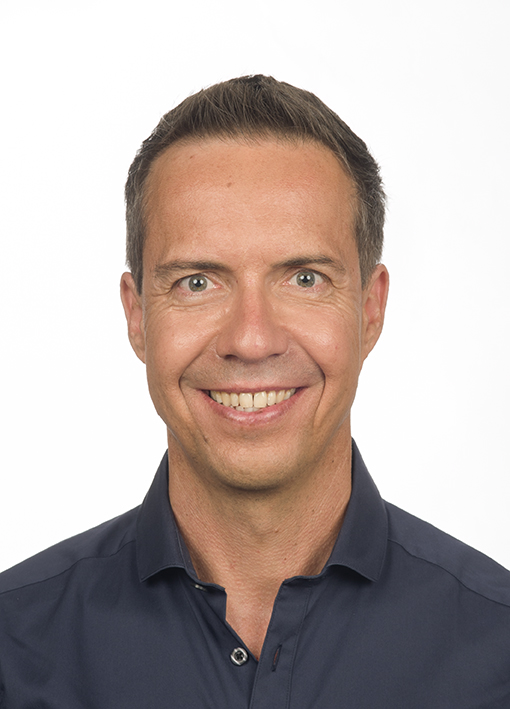Décembre 2020
Entretien
Spotlight on... Alexander Künzli

Lisez cet entretien en français
Alexander Künzli has been an associate professor at the Faculty of Translation and Interpreting (FTI) since 2012. His diverse background includes not only a degree in translation, but also a master’s in psychology and a PhD in French linguistics. He is head of the FTI’s German Unit and has been co-head of the Translation Department since mid-July. He is also Editor-in-Chief of the academic journal Parallèles. His research interests include translation revision and audiovisual translation, which is the topic of today’s interview.
What is audiovisual translation and how did you get into this field?
Audiovisual translation is a broad concept. It refers not only to the process of translating an audiovisual text from one language to another for an audience who is unfamiliar with the language of the original soundtrack, but also any kind of transfer operation that provides audiences with a sensory disability with access to live shows and media: dubbing an American film into Italian; supplying French subtitles for Swiss German corporate videos; providing an audiodescription of a play, which consists of a voice-over that describes important visual elements to make the show accessible for blind and visually impaired people. Creating intralinguistic subtitles for television is another growing activity. Today, over two-thirds of Swiss television programming include subtitles for the deaf and hard of hearing. In addition to transcribing the content, these subtitles also contain descriptions of sound effects, paralinguistic information (for example, an ironic tone of voice) and colour-coding to help identify who is speaking. In fact, several of our FTI graduates currently work in the SWISS TXT team in Geneva, which produces subtitles for the Swiss television channel, Radio Télévision Suisse.
In terms of my own experience, I first became professionally involved in audiovisual translation in the nineties, when I began working as a subtitler for Swiss, then Swedish, companies. I created German subtitles for motion pictures, advertising spots and documentaries. The work was fascinating, but I had to learn how to do it on the job, as there were very few training programmes at the time. This practical experience later inspired me to turn to teaching and research in audiovisual translation.
How has training in audiovisual translation developed since then?
Professional translators are increasingly called upon to translate audiovisual content, as a great deal of the external communication from institutions and companies occurs through multimedia channels. As a result, many training institutes now include audiovisual translation in their curriculum. At the FTI, our master’s programmes in translation include a course on audiovisual translation, which allows students to familiarise themselves with the most common types of audiovisual translation on the market. This class has often inspired innovative MA thesis projects, which allow students to be in close contact with the professional world of audiovisual translation.
Furthermore, in the last few years, we have also offered several continuing education programmes in audiovisual translation: interlinguistic subtitling, intralinguistic subtitling for the deaf and hard of hearing, and audiodescription. These programmes take the form of multilingual workshops, which provide a welcome platform for discussion for translation and communication specialists who wish to add a new skill to their services.
Audiovisual translation seems to cover a wide variety of practices. Which specific ones interest you?
My research focuses on interlinguistic subtitling. I’ve worked with French films d’auteur and analysed the particular challenges of producing German subtitles for these films. How do you transmit orality, slang and multilingualism in writing? I’m also interested in the challenges of subtitling Swiss German productions and, in particular, the diglossia between Swiss German dialects and Standard German. Can the nuances of dialect, which may be significant for the plot of a film, be recreated in French? While such phenomena already pose a challenge for translation in general, they become all the more problematic when it comes to audiovisual translation and subtitling, which demands that certain spatiotemporal constraints be respected. Subtitles must be legible, in other words, appear on the screen for long enough, convey essential information from the original soundtrack, and attempt to recreate spoken language.
In the Swiss context, there is an added challenge. When I worked as a film subtitler, my clients often required that the German subtitles not only match the English soundtrack, but also the French subtitles, as differences between subtitles in the two languages would be jarring for a bilingual audience – this meant taking into consideration two source languages and texts! The context of reception – analysing the expectations and needs of the audience – is another important branch of research on subtitling. I addressed these issues in a 2017 volume on interlinguistic subtitles. The results of my experiments suggest that subtitling conventions need to be revised, as the target audience is able to handle more text than expected, without a negative impact on their comprehension of the dialogue or perception of essential visual elements.
How is the subtitling profession evolving and what are your current research projects?
Since 2017, the environment and working conditions for subtitling have been completely overhauled, in large part due to the development of the streaming services market. In an ideal world, subtitlers would select, or rather, break down the dialogue into subtitles, as well as produce the translation. Due to the growing number of language pairs in major streaming projects, however, the work is increasingly limited to translation alone. This has consequences on the quality of the work. Oftentimes, the display time for subtitles, which is predetermined in the templates that are used for subtitling, cannot be changed, which means that the Icelandic and Albanian subtitles of a Norwegian film are treated as though they are governed by the same constraints. Furthermore, in the streaming industry, translators are often asked to work with an intermediary translation. Rather than subtitling a Danish series into French directly from the Danish text, the translator is provided with a template in English. These are the kinds of changes that I am currently looking at. I’m conducting a series of interviews with professional subtitlers to examine their personal outlook on these changes and the repercussions they may have on the quality of subtitles. I will be presenting the initial results of this study in January 2021 at the Media for All 9 conference, which will be held online – all presentations, of course, will be subtitled!
